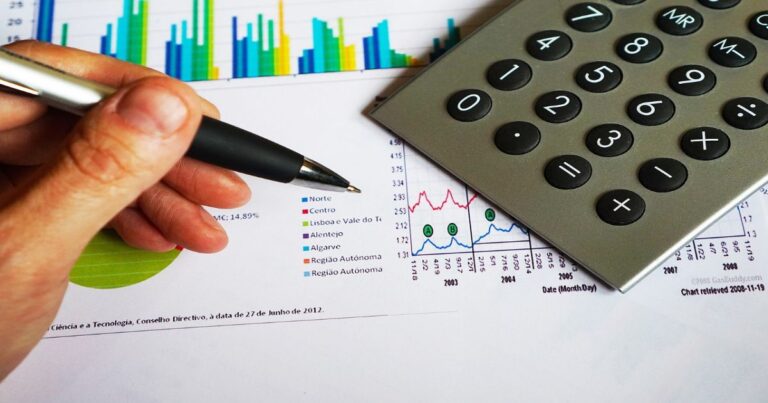Emergency Fund: How Much Should You Save?
An emergency fund is crucial to any financial plan, providing a safety net for unexpected expenses like medical bills, car repairs, or job loss. Knowing how much to save varies from individual, which can depend on your lifestyle, income, and financial obligations. Here’s a detailed guide on building an emergency fund that works for you.
What Is an Emergency Fund?
An emergency fund is a dedicated savings account for unplanned financial emergencies. It helps you avoid relying on credit cards or high-interest loans when unexpected expenses arise.
Why You Need It:
- Peace of Mind: It reduces financial stress by giving you a buffer against life’s uncertainties.
- Avoid Debt: An emergency fund prevents you from falling into debt when facing a financial emergency.
- Financial Stability: It keeps you financially stable even when facing job loss, medical emergencies, or other significant expenses.
How Much Should You Save?
The amount you should save for an emergency fund depends on several factors, which include living expenses, family size, and job security. Here are the general guidelines:
3 to 6 Months of Living Expenses
- Who This Applies To: This is widely recommended for most people with a steady income and stable job. 3 to 6 months’ worth of living expenses is typically sufficient.
- Considerations: Include essential expenses like rent/mortgage, utilities, groceries, insurance, debt payments, and transportation in your calculations.
6 to 12 Months of Living Expenses
- Who This Applies To – If you have an irregular income, work in a volatile industry, or are self-employed, aim to save 6 to 12 months of living expenses.
- What to Consider: Freelancers, entrepreneurs, or those working on commission may face income fluctuations, making a larger emergency fund necessary.
1 to 3 Months of Living Expenses
- Who This Applies To If you’re starting your emergency fund or are focusing on paying down debt, saving 1 to 3 months of living expenses is an initial goal.
- What to Consider: This provides a smaller cushion than not having an emergency fund. Over time, aim to build up a range of 3-6 months.
How to Calculate Your Emergency Fund
Start by calculating your essential monthly expenses:
- Housing: Rent or mortgage payments.
- Utilities: Electricity, gas, water, internet, etc.
- Food: Groceries, not dining out.
- Insurance: Health, auto, and other necessary policies.
- Debt Payments: Minimum payments for credit cards, student loans, etc.
- Transportation: Gas, car maintenance, or public transport.
Once you have your total monthly expenses, multiply by the months you want to cover (e.g., 3, 6, or 12).
Where to Keep Your Emergency Fund
Your emergency fund should be easily accessible. However, avoid the constant temptation to dip into it for non-emergencies.
High-Yield Savings Account
One of the best places to store your emergency fund is a high-yielding savings account that guarantees quick access to your money while earning a better interest rate than traditional savings accounts. Look for accounts with no fees and minimal withdrawal restrictions.
Money Market Accounts
Money market accounts can offer higher interest rates and are more easily accessible than CDs (Certificates of Deposit) or investment accounts. However, make sure you’re aware of withdrawal limits.
Avoid Stocks and Investments
Since the stock market can fluctuate, you should avoid investing in your emergency fund. Liquidity and stability are vital to emergency savings.
How to Build an Emergency Fund
Building an emergency fund takes time and discipline, but here are steps you can take to reach your goal:
- Automate Your Savings: Set up automatic transfers from your checking account to your emergency fund each payday.
- Start Small: If saving 3-6 months seems overwhelming, start with smaller milestones. Aim for $500, then $1,000, and gradually work up.
- Cut Unnecessary Expenses: Evaluate your budget for areas to cut back (e.g., dining out, entertainment) and divert that money into your emergency fund.
- Use Windfalls: Tax refunds, bonuses, or other unexpected income can quickly boost your emergency fund.
When to Use Your Emergency Fund
It is a best practice to use your emergency fund for true emergencies alone, such as:
- Medical emergencies.
- Job loss or income reduction.
- Major car or home repairs (e.g., fixing a leaky roof).
Avoid dipping into the fund for non-essential purchases like vacations or new gadgets.
Final Thoughts
A robust emergency fund can provide peace of mind and financial stability in uncertain times. Aim to save at least 3-6 months of living expenses and be consistent. Start small if necessary and gradually work toward your savings goal.







